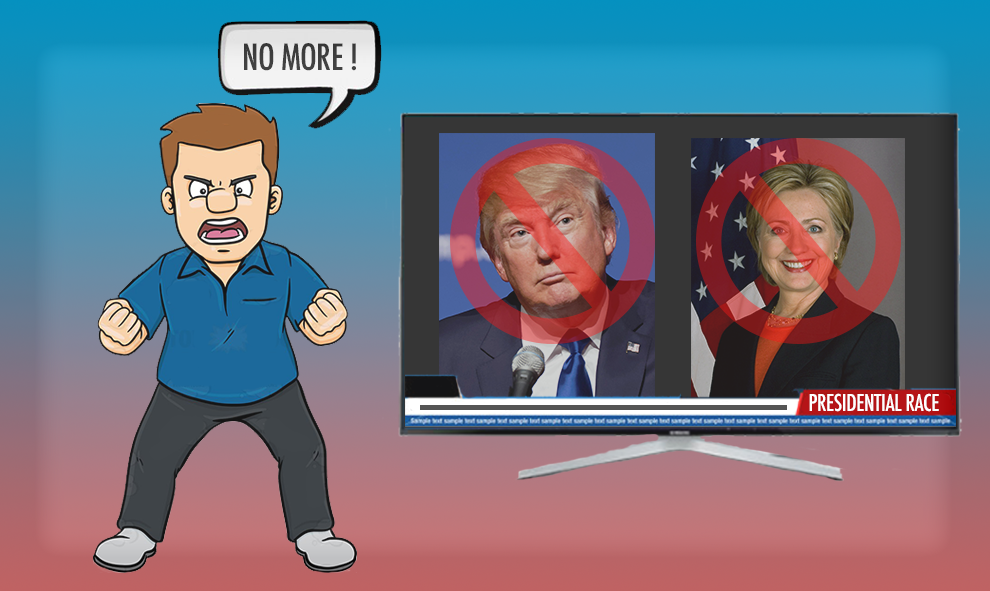Candidates mostly waste our time with negative political ads
Image by Maria Echeverry.
I am counting down the days until Nov. 8, mainly because I think I will be physically sick if I have to endure the pain of many more political ads on television. I am so over politicians’ lame 30-second attempts to roast one another for an audience that is tuned out regardless.
Political ads have absolutely no effect on me. What type of person is actually swayed by negative campaign ads? According to a report from the Wesleyan Media Project, three-fourths of ads aired during the last presidential race “appealed to anger.”
Despite the intended appeal, I can honestly say a political advertisement has never made me angry with the candidate being insulted. If anything I am angry that 30 seconds of my life are wasted on meaningless trash talk.
The popularity of negative campaign ads increased in the 2012 election. Although most people claim to hate negative campaign ads, there is some evidence saying they are effective. For example, negativity often makes a stronger impression in the human brain. There is also a degree of complexity with negativity that positive ads can’t replicate.
CNN states, “Every negative ad has at least an implied comparison. If Mitt Romney is ‘not a true conservative,’ then by implication the candidate sponsoring the ad is saying he or she is a true conservative. This complexity can cause us to process the information more slowly and with somewhat more attentiveness.”
So when a negative ad implicates something about one candidate, it also has a counter-argument for the opposing candidate. I feel sure that once this election cycle is over, statistics from 2016 campaign ads will show yet another increase in negativity.
I understand that a negative ad may sometimes be more effective than a positive message, but I have questions. To what extent are negative ads more effective? Are they more effective for all personality types?
There are some negative ads that make sense, like the recent Hillary Clinton commercial highlighting Trump’s negative comments toward women and how they affect young girls viewing him as a leader.
Others however, do not make sense. Some are even comical.
Recently U.S. Rep. Kevin Yoder’s opponent, Jay Sidie, released a commercial implying that Yoder and widely disliked Kansas Governor Sam Brownback are closely connected. The ad even cites a New York Times article on the state of Kansas, except that in reality that article did not mention Yoder.
According to research from the political science department at Stanford, “The best single predictor of campaign tone, it turns out, is the closeness of the race. The tighter the contest, the meaner the campaign.”
This fact makes it easier to understand why negative campaign ads are so heated among local politicians. The fight is fierce when it comes to smaller communities and a limited voter pool. This principle can also apply to a few key swing states in the presidential campaign.
So when you see the commercial featuring Hillary Clinton stuffing her face with sauerkraut, try to remember that this ad really says more about Donald than Hillary.
Since the introduction of TV media into elections, it has been used as a tool to polarize people into their pre-chosen parties or to sway undecided voters.
The second a political slam ad comes on TV, I now mute it, change the channel or walk away. American voters shouldn’t have to waste so much of their lives listening to negative ads that subconsciously try to sway them.








